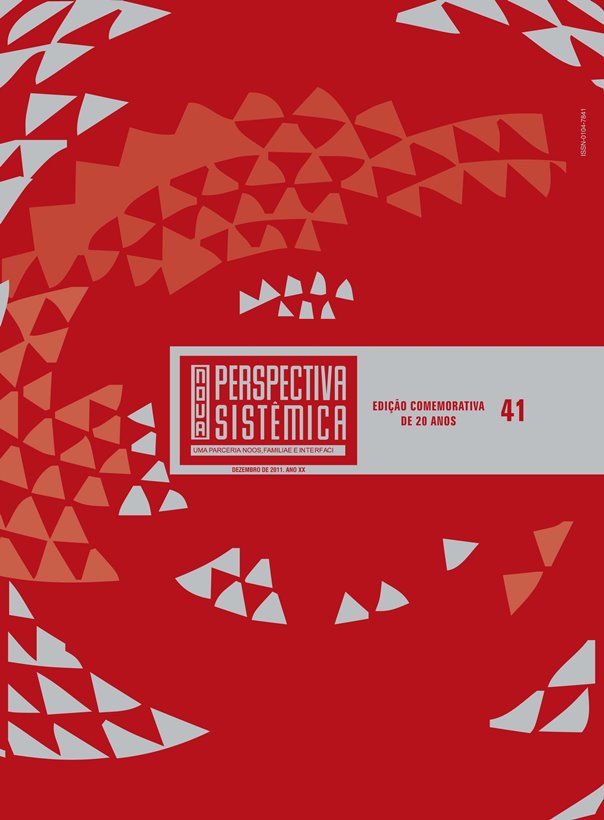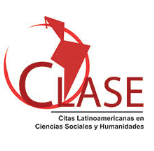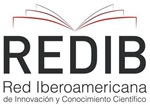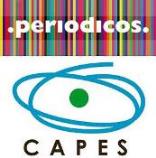Uma perspectiva colaborativa sobre ensino e aprendizado: a criação de comunidades de aprendizado criativo
Resumo
O panorama cambiante da prática terapêutica exige a adoção de novas práticas na formação de terapeutas. Este artigo discute as abordagens do aprendizado colaborativo e comunidades de aprendizado colaborativo como respostas a essas novas necessidades. O aprendizado colaborativo tem suas bases nas premissas pós-modernas. Implica a formação de uma parceria entre formador/supervisor-aprendiz/estudante, e também entre os próprios aprendizes/ estudantes na qual o relacionamento e o processo são menos hierárquicos e menos dualísticos. Isto valoriza e utiliza também, e de forma equitativa, a sabedoria, a expertise e a experiência de todos os membros da comunidade. A aplicação desta aproximação é ilustrada pela descrição de um curso para de supervisores.Downloads
Referências
Anderson, London & Punsky, 2000)
Bateson, G
Bahktin, 1981, 1984Edwards, 2005; Gadamer, 1975; Habermas, Shotter, 1984, 2005, 2006;
Anderson; Shotter, Golub, 1988; Kuh, 1990; 1998; Sir Ken Robinson, , 1986).
Anderson, H. (2010)
Anderson, H. (2000) Supervision as a collaborative learning community. American Association for Marriage and Family Therapy Supervision Bulletin. Fall 2000, 7-10.
Anderson, H. (1998) Collaborative learning communities. In. S. McNamee & J.K. Gergen (Eds.). Relational Responsibility. Sage Publications: Newbury Park, CA.
Anderson, H. (1984) The new epistemology in family therapy Implications for training family therapists. Doctoral Dissertation. University Microfilms.
Anderson, H. & Goolishian, H. (1991) Supervision as collaborative conversation: Questions and reflections. In H. Brandau (Ed.). Von der Supervision zur Systemischen Vision. Salzburg: Otto Muller Verlag.
Andersen, T. (1995). Reflecting processes; acts of informing and forming: You can borrow my eyes but you can’t take them away from me. In S. Friedman (Ed.). The reflecting team in action: Collaborative practice in family therapy. Nova York: Guilford. pp. 11-37.
Anderson, H. & Rambo, A. (1988) An experiment in systemic family therapy training: A trainer and trainee perspective. Journal of Strategic and Systemic Therapies 7:54-70. student's and the teacher's expertise. Human Systems: The Journal of Systemic Consultation and Management. 4:145-160.
Anderson, H. & Swim, S. (1994) Supervision as collaborative conversation: Combing the supervisor and the supervisee voices. Journal of Systemic Therapies. 14(2):1-13.
Anderson, H. & Swim, S. (1993) Learning as collaborative conversation: Combining the student's and the teacher's expertise. Human Systems: The Journal of Systemic Consultation and Management. 4:145-160.
(Gergen, K. J. (1982); 1999, 2009 a,b;
McNamee. S. (2007)
Sampson, (1993)
Shotter, J. (1984)
Shotter, J. (2008)
Smith, Harre, R. & Van Langenhove, (1995) Astin, A. W. (1985). Achieving educational excellence. San Francisco, CA: Jossey-Bass. Belenky, M. f., Clinchy, B. M., Goldberger, N. R. & Tareul, J. R. (1986). Women’s ways of knowing. Nova York: Basic Books.
Bateson, G. (1972). Steps to an ecology of the mind. Nova York: Ballantine Books.
Belenky, M. F., Clinchy, B. M., Goldberger, N. R. & Tarule, J. R. (1986). Women’s ways of knowing. Nova York: Basic Books.
Bonwell, C.C., & Eison, J.A. (1991). Active learning: Creating excitement in the classroom. ASHE-ERIC Higher Education Report No. 1. Washington, DC: The George Washington University, School of Education and Human Development.
Bosworth, Kris (1994). Developing Collaborative Skills in College Students. Collaborative Learning: Underlying Processes and Effective Techniques. In K. Bosworth & S. J. Hamilton (Eds.), New directions for teaching and learning. no. 59. San Francisco: Jossey-Bass, 1994, pp. 25-31.
Bruffee, K. (1993). Higher education, interdependence and the authority of knowledge.
Goodsell, A., Maher, M., Tinto, V, and Associates (Eds.) (1992). Collaborative learning: A sourcebook for higher education. University Park: National Center on Postsecondary Teaching, Learning, and Assessment, Pennsylvania State University.
Caldwell, Becvar, Bertolino & Diamond, (1997).
Derrida, J. (1978). Writing and difference. (A. Bass, Trans.). Chicago: University of Chicago Press.
Freire, P. (1970)
Gadamer, H--G
Garfinkle, H. (1967) Golub, 1988
Hacking, I. (1999). The social construction of what?. Cambridge, MA: Harvard University Press.
Hermans, H. J. M.. (1992). The limitations of lobic in defining the self. Theory and psychology. 5: 375-382.
John-Steiner, V. (2000) Creative Collaboration. Nova York: Oxford
University Press.
Johnson, D. W., Johnson, R. T. & Holubec, E. J. (1994). The Nuts and Bolts of Collaborative Learning. Edina, MN: Interaction Book Company.
Keagan, R.
Kuh, (1990). Study Group on the Conditions of Excellence in Higher Education, 1984).
Lyotard, J.-F. (1984) .The post-modern condition: A report on knowledge. Minneapolis: University of Minneapolis Press.
Merleau-Ponty, M. (1992). Phenomomenology of perception (trans. C. Smith) London: Routledge and Kegan Paul.
Foucault, M. (1972). The archeology of knowledge. Sheridan, London: Tavistock.
Mezirow, J. & Associates (2000). Learning as transformation. San Francisco, CA: Jossey-Bass.
Peters, J. 7 Armstrong, J. (1998). Collaborative learning: People laboring together to construct knowledge. In Saltiel, I. M., Sgroi, A. & Brockett, R. G. (Eds.). The power and potential of collaborative learning partnerships. New Directions for Adult and Continuing Education, no 70. San Francisco: Jossey-Bass.
Resnick, L.B. (1991). Shared cognition: Thinking as social practice. In L. B. Resnick, In J. M. Levine and S. D. Teasley (Eds), Perspectives on Socially Shared Cognition. Washington, DC: American Psychological Association.
Schön, D. (1983). The reflective practitioner: How professionals think in action. Nova York: Basic Books.
Slavin, R. E. (1990). Cooperative learning: Theory, research and practice. Needham Heights: Allyn and Bacon.
Smith, B. L. & MacGregor, J. T. (1992) What is collaborative learning?” In A. Goodsell, M. Mahe & V. Tinto (Eds.) Collaborative learning: A sourcebook for higher education. Pennsylvania: The National Center on Postsecondary Teaching, Learning and Assessment at Pennsylvania State University.
Von Foerster, H, (1982). Observing Systems. Seaside: Intersystems Publications.
Vygotsky, L. S. (1962). Thought and language (E, Hanfmann & G. Vakar, Ed. And Trans.). Cambridge, MA: MIT Press. (Original work published in 1934).
Vygotsky, L. S. (1978). Mind in society: The development of higher psychological processes. Cambridge, MA: Harvard University Press
Wiener, H. S. (1986) Collaborative Learning in the Classroom: A Guide to Evaluation. College English 48(1), 52-61.
Wittgenstein, L. (1961). Tractatus logico-philosophicus (D. Pears & B. McGulness, Trans.). London: Routledge and Kegan Paul. (Original work published in 1922).
Bosworth, K. (1994). “Developing Collaborative Skills in College Students.” Collaborative Learning: Underlying Processes and Effective Techniques. In K. Bosworth and S. J. Hamilton (Eds.) New Directions for teaching and learning, no. 59. San Francisco, CA: Jossey-Bass, pp. 25-31.
Bosworth, K. & Hamilton, J. S. (1994). Collaborative learning: Underlying processes and effective techniques. In New Directions for Collaborative Learning, no. 59. San Francisco, CA: Jossey-Bass.
Anderson, H. (1993). (1993). LEARNING AS COLLABORATIVE CONVERSATION with Commentary by Laura Fruggeri. Human System: The Journal of Therapy, Consultation and Training.vol. 4, Issue 3-4
Downloads
Como Citar
Edição
Seção
Licença
Autores que publicam nesta revista concordam com os seguintes termos:- Autores mantém os direitos autorais e concedem à revista o direito de primeira publicação, com o trabalho licenciado simultaneamente sob uma Licença Creative Commons Attribution após a publicação, permitindo o compartilhamento do trabalho com reconhecimento da autoria do trabalho e publicação inicial nesta revista.
- Autores têm autorização para assumir contratos adicionais separadamente, para distribuição não-exclusiva da versão do trabalho publicada nesta revista (ex.: publicar em repositório institucional ou como capítulo de livro), com reconhecimento de autoria e publicação inicial nesta revista.
- Autores têm permissão e são estimulados a publicar e distribuir seu trabalho online (ex.: em repositórios institucionais ou na sua página pessoal) a qualquer ponto antes ou durante o processo editorial, já que isso pode gerar alterações produtivas, bem como aumentar o impacto e a citação do trabalho publicado (Veja O Efeito do Acesso Livre).

















